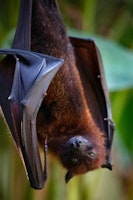6. Samoa Air has a pay-by-weight system
![Postcard of American Somoa showing a drawing of the ocean and sunset with pine trees]()
In 2013, Samoa Air introduced a pay-by-weight system for passengers. Unlike other airlines, which charge a fixed rate based on fare classes, Samoa Air charges passengers based on the combined weight of the individual and their luggage. The more you weigh, the higher the cost of your flight.
Samoa Air asks passengers to declare their weight during booking, which is then charged per kilogram (2.2 lbs) at a rate depending on the flight’s length. To prevent passengers from lying about their weight, they are also weighed at the check-in counter.
Why does Samoa Air have a pay-by weight system?
Samoa Air introduced a pay-by-weight system because American Samoa, along with Nauru and the Cook Islands, ranks among the nations with the highest obesity rates. American Samoa has the highest global obesity rate, with 75% of its population classified as obese (Healthcare Digital).
The pay-by-weight system matches the needs of the island’s populace, and particularly benefits families with children, who can now buy cheaper tickets for their kids. The airline can also more precisely fill planes to their maximum capacity.
7. The National Park of American Samoa is the only U.S. national park south of the equator
American Samoa is located in the Pacific Ocean, and its ecosystem is unique compared to other U.S. national parks on the mainland. Visitors can explore rainforests, coral reefs, and beaches while learning about Samoan culture, folklore, and traditions.
Important Information for Visiting the National Park of American Samoa:
- Getting Around: The park offers “aiga” buses and taxis for transportation. Or you can rent a car for more independence.
- Where to Stay: Hotel accommodations are available. For a more authentic experience, consider a homestay with a local family.
- Climate: American Samoa is warm year-round, with temperatures often in the low 90s°F (30s°C). The humidity can make the heat feel even more intense, so be prepared for a hot climate.
- What to Wear: Light, casual clothing that covers most of the body is recommended to stay comfortable and show respect to the local culture. Swimwear such as rash guards or swim shirts is preferred over bikinis. Carry a light rain jacket or umbrella, as rain showers can come and go quickly. Another great option to opt for if you want a more local feel is to get your hands on a Lavalava! A lavalava is a traditional Samoan sarong. It’s often worn by both locals and visitors, especially for casual events or when attending cultural gatherings.
Pro Tip: Camping is not allowed in the park, and on smaller islands, there are no public vehicles—so be prepared to explore on foot.
8. American Samoa is home to several endangered and endemic species
American Samoa is home to several rare and unique species, some of which are endangered or found nowhere else in the world.

Samoan Flying Fox
The Samoan flying fox is crucial to the rainforests of American Samoa. The territory is abundant in fruit-bearing trees, making it an ideal home for this species. The flying fox feeds on nectar and fruits from these trees, and in the process, it transfers pollen between flowers, helping various rainforest species reproduce.
Samoan Starling
The Samoan starling is endemic to American Samoa and plays a vital role as a fruit eater and seed disperser. However, the starling faces threats from habitat loss, putting its population at risk.
 Hawksbill Sea Turtle
Hawksbill Sea Turtle
The Hawksbill Sea turtle nests on the shores of American Samoa. The Hawksbill’s shell is beautiful and distinct, which unfortunately make the turtle highly prized and human poaching led to its status as an endangered species.
White-Throated Pigeon
The white-throated pigeon is native to the Samoan Islands, distinguished by its white throat and colorful mix of grey, green, and brown feathers. This pigeon helps maintain forest health by dispersing seeds while eating fruit.
Perhaps this is one of the not so fun facts about American Samoa.
>> Help Conserve Marine Life: Marine Life and Coastal Restoration in the Dominican Republic.




 Hawksbill Sea Turtle
Hawksbill Sea Turtle